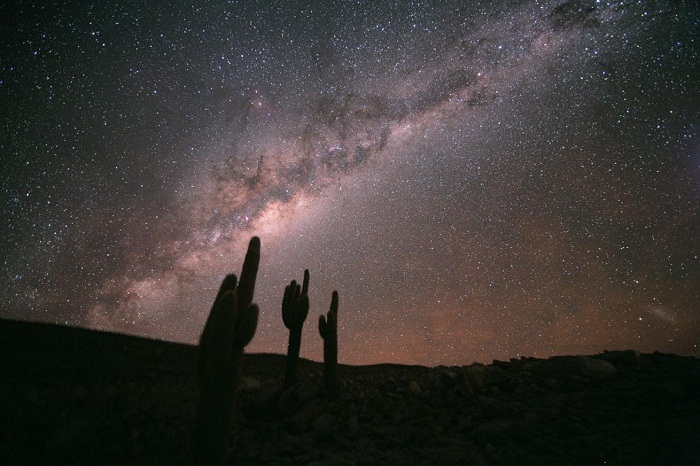Now’s Your Best Chance to See the Milky Way

In the waning days of summer, sky-watchers can get an amazing view of our home galaxy, the Milky Way, in the evening skies. When viewed away from city lights, it is visible as a faint hazy band stretching from east to west overhead. For those in brightly lit suburbs, binoculars can help spot swarms of faint stars strewn across the Summer Triangle pattern of stars high above our heads this time of the year. The Milky Way actually cuts right across the cross-shaped constellation Cygnus, the swan. Our sun and its family of planets live inside this vast Frisbee-shaped disk that is home to about a hundred billion suns and stretches some hundred thousand light-years across. Yet, the Milky Way is only one of over a hundred billion other galaxies that are thought to inhabit the universe. The hazy band we see above our heads is actually one of our galaxy’s spiral arms spread out in front of us, filled with millions of stars. Our sun sits about two-thirds of the way out from the downtown central core of the spiral at about 30,000 light-years distant. Zodiacal Lights For a second and last week, observers in the Northern Hemisphere can catch the elusive glow of the zodiacal lights. Far from city lights in the dark countryside, about an hour before sunrise, look for a pyramid-shaped glow—fainter than the Milky Way—rising above the eastern horizon before sunrise. This ethereal light is caused by sunlight reflecting off countless dust particles scattered along the plane of the solar system, between the planets. Lunar Lineup As evening dusk sets in on Thursday, September 8, look for the quarter moon forming a near-vertical line with yellow-colored Saturn and orange-hued Antares. Meanwhile, ruddy Mars shines brightly to the cosmic trio’s left. But by Friday evening, as the moon orbits our planet, it will have positioned itself above Mars. While the two objects look close together, the red planet is in fact 350 times farther than our own natural satellite.

